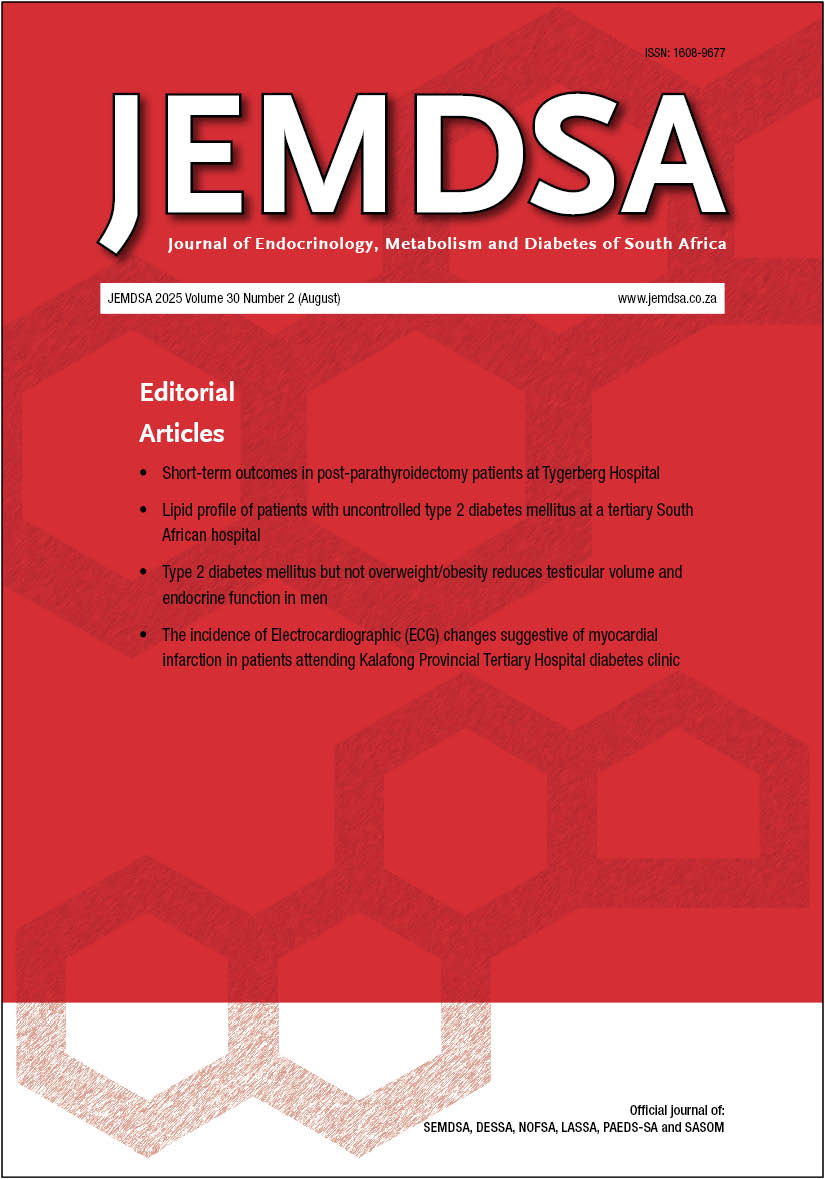Short-term outcomes in post-parathyroidectomy patients at Tygerberg Hospital
Keywords:
calcium, hungry bone syndrome, parathyroidectomy, parathyroid hormone, primary hyperparathyroidismAbstract
Background: Primary hyperparathyroidism (PHPT) often presents asymptomatically but can lead to significant complications. Surgery is the only definitive treatment, with bilateral neck exploration (BNE) and focused parathyroidectomy (FP) both associated with high cure and low complication rates. Limited research exists regarding post-parathyroidectomy outcomes in South Africa (SA).
Objective: This study aimed to describe the short-term outcomes of BNE and FP at Tygerberg Hospital (TBH).
Methods: This retrospective study examined patients who underwent surgery for PHPT between 1 January 2015 and 1 October 2023. Data were extracted from an ethics-approved endocrine surgical database. Surgery type, postoperative complications, i.e. hypocalcaemia, hungry bone syndrome (HBS), recurrent laryngeal nerve (RLN) injury, haematoma requiring surgical intervention, airway complications, surgical site infection (SSI), and seroma and cure rates were investigated.
Results: During the study period, 136 patients underwent surgery for PHTP. BNE was performed in 61 patients and FP in 69, while 6 had a unilateral parathyroid exploration. A cure rate of 91.9% (113/123) was achieved. Hypocalcaemia occurred postoperatively in 31.9% (43/136) of patients, of which 81.4% (35/43) had HBS. One patient suffered a permanent RLN injury, and one patient required re-exploration for a haematoma. No airway obstruction, seroma, or SSIs were reported.
Conclusion: Parathyroidectomy for PHPT at TBH is performed safely and achieves outcomes comparable to international standards. The high incidence of HBS in our setting reflects the severity and prolonged duration of PHPT.
Downloads
Published
Issue
Section
License
Copyright (c) 2025 Author/s

This work is licensed under a Creative Commons Attribution-NonCommercial 4.0 International License.

